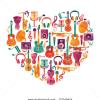CYBERMED LIFE - ORGANIC & NATURAL LIVING
CYBERMED LIFE - ORGANIC & NATURAL LIVING
 Music therapy is the clinical and evidence-based use of music interventions to accomplish individualized goals within a therapeutic relationship by a credentialed professional who has completed an approved music therapy program. Music therapy is one of the expressive therapies, consisting of a process in which a music therapist uses music and all of its facets—physical, emotional, mental, social, aesthetic, and spiritual—to help clients improve their physical and mental health. Music therapists primarily help clients improve their health in several domains, such as cognitive functioning, motor skills, emotional development, social skills, and quality of life by using both active and passive music experiences such as free improvisation, song, dance, listening, and discussion of music to achieve treatment goals. There is a wide qualitative and quantitative research literature base which incorporates clinical therapy, psychotherapy, biomusicology, musical acoustics, music theory, psychoacoustics, embodied music cognition, aesthetics of music, sensory integration, and comparative musicology.
Music therapy is the clinical and evidence-based use of music interventions to accomplish individualized goals within a therapeutic relationship by a credentialed professional who has completed an approved music therapy program. Music therapy is one of the expressive therapies, consisting of a process in which a music therapist uses music and all of its facets—physical, emotional, mental, social, aesthetic, and spiritual—to help clients improve their physical and mental health. Music therapists primarily help clients improve their health in several domains, such as cognitive functioning, motor skills, emotional development, social skills, and quality of life by using both active and passive music experiences such as free improvisation, song, dance, listening, and discussion of music to achieve treatment goals. There is a wide qualitative and quantitative research literature base which incorporates clinical therapy, psychotherapy, biomusicology, musical acoustics, music theory, psychoacoustics, embodied music cognition, aesthetics of music, sensory integration, and comparative musicology.
Some commonly found practices include developmental work (communication, motor skills, etc.) with individuals with special needs, songwriting and listening in reminiscence/orientation work with the elderly, processing and relaxation work, and rhythmic entrainment for physical rehabilitation in stroke victims. Music therapy is also used in some medical hospitals, cancer centers, schools, alcohol and drug recovery programs, psychiatric hospitals, and correctional facilities "About Music Therapy & AMTA". American Music Therapy Association, 2011. November 9, 2011.
Music therapy comes in two different forms: active and receptive. In active therapy, the therapist and patient actively participate in creating music with instruments, their voice, or other objects. This allows for the patient to be creative and expressive through the art of music. Receptive therapy takes place in a more relaxed setting where the therapist plays or makes music to the patient who is free to draw, listen or meditate. Usually the therapist determines the method unless specifically requested by the patient.
Music has been found to be an effective tool for music therapists through extensive research. It is beneficial for any individual, both physically and mentally, through improved heart rate, reduced anxiety, stimulation of the brain, and improved learning. Music therapists use their techniques to help their patients in many areas, ranging from stress relief before and after surgeries, to neuropathologies such as Alzheimer's disease. One study found that children who listened to music while having an IV inserted into their arms showed less distress and felt less pain than the children who did not listen to music while having an IV inserted. Studies have been carried out on patients diagnosed different mental disorders such as anxiety, depression and schizophrenia and there has been a visible improvement in their mental health after the therapy.
Approaches used in music therapy that have emerged from the field of music education include Orff-Schulwerk (Orff), Dalcroze Eurhythmics,and Kodály Method. Models that developed directly out of music therapy are neurologic music therapy (NMT), Nordoff-Robbins music therapy and the Bonny method of guided imagery and music.
Music therapists may work with individuals who have behavioral-emotional disorders. To meet the needs of this population, music therapists have taken current psychological theories and used them as a basis for different types of music therapy. Different models include behavioral therapy, cognitive behavioral therapy, and psychodynamic therapy. The therapist has an ongoing responsibility to evaluate the extent to which the client is achieving the goals of therapy and whether the methods of therapy being used are helping or hindering the client.
One therapy model based on neuroscience, called "neurological music therapy" (NMT), is "based on a neuroscience model of music perception and production, and the influence of music on functional changes in non-musical brain and behavior functions". In other words, NMT studies how the brain is without music, how the brain is with music, measures the differences, and uses these differences to cause changes in the brain through music that will eventually affect the client non-musically. As Michael Thaut put it: "The brain that engages in music is changed by engaging in music." NMT trains motor responses (i.e. tapping foot or fingers, head movement, etc.) to better help clients develop motor skills that help "entrain the timing of muscle activation patterns".